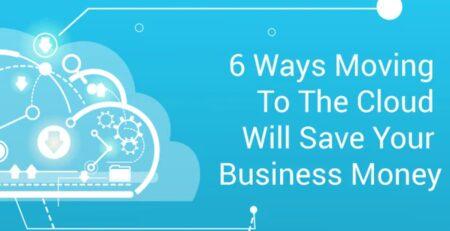How Do Hybrid Workplaces Boost Employee Engagement?

The world came to a halt owing to the COVID-19 pandemic. It forced most of us to try out a new working arrangement. That is when work-from-home and remote working policies came into consideration.
However, some jobs require fieldwork and cannot support the work from home setup. In such a scenario, a hybrid workplace can strike a balance between the two.
This working model has enormous advantages. It gives employees a sense of freedom and fulfilment at work. But, there are some challenges that employers and employees are facing for the first time. At the top of this priority list are employee engagement and employee wellbeing
But let’s first reflect on the definition and advantages of a hybrid workplace.
Meaning Of A Hybrid Workplace
The hybrid workplace supports a distributed workforce. It includes both in-office and remote workers. It is a scenario in which employees occasionally work at the office and complete the rest of their work from home at their convenience.
Advantages Of A Hybrid Workplace.
- The hybrid workforce is more productive, promotes holistic well-being, and thus more economical.
- It attracts employees of all ages and retains them by enhancing job satisfaction.
- Both your employees and your company will profit financially from a hybrid workplace. You save money on operating expenses. Your employees save money since they don’t have to commute to work or buy lunch.
- By reducing the number of people in the office during a pandemic, a hybrid workplace is a great safety protocol.
The Hidden Traps Of A Hybrid Workplace
It Is Difficult For Women, Digital Introverts And Junior Executives.
The pandemic particularly hit women’s lives massively. Because of the pressures of home-schooling their children, many mothers chose to be furloughed. Their male counterparts, on the other hand, continued to work full-time, although remotely.
In the hybrid work model, there is a significant risk that men’s and women’s attendance at physical workplaces will be imbalanced. It will have more women choosing to work remotely for a longer time. As a result, women are likely to fall behind in promotion possibilities and might lead to an increased gender pay gap.
Meanwhile, extroverts have a greater chance of fitting in at hybrid workplaces. They are more likely to wish to return to work. But introverts would most likely want to continue working from home. This division of different workplaces runs the risk of creating a digital divide.
The employees who work in the office can participate and contribute more effectively. But those who work from home fall behind and are side-lined.
Introducing and nurturing new talent is a daunting challenge in the hybrid workplace. There are several advantages to working in a physical location that would be lost or lessened in a hybrid setting.
For example-
- They will face the inability to understand the organizational structure and culture.
- They will have limited exposure to their colleagues and leaders.
- It will affect trust due to a lack of communication and team-building activities.
Lack Of Proper Equipment Impacts Productivity.
Equipment can range from laptops, stationeries, mobile phones, office supplies to internet connections and ergonomic furniture.
Let’s not deny, we’ve all worked from our beds during the pandemic. Numerous studies suggest that working from a bed can be harmful to both the mind and the body. Poor working posture can cause headaches and back pain, affecting productivity.
When most companies provide this equipment and supplies to in-person employees, refusing to provide or reimburse remote and hybrid employees for these expenses is a clear sign of a hostile work environment.
There Is Ever-Increasing Isolation And Resentment Among Employees.
Social isolation is an evil that comes along with a hybrid workplace. This isolation is often caused by employees’ feelings of exclusion rather than a lack of engagement with their co-workers. According to a 2020 Igloo survey, nearly 60% of all teleworkers say they don’t have access to specific information because managers shared it in person. Furthermore, 55% say they’ve been left out of meetings because they aren’t physically present.
Long working hours (a supposed by-product of remote work) that result in overwork can also lead to genuine burnout for these employees
A Eurofound study discovered that mobile employees have much greater stress levels. For example, 41% of them regard themselves as “very stressed,” compared to only 25% of those who do not work remotely. Furthermore, 42% of teleworkers (at home or on the go) say they wake up multiple times per night (compared to 29 percent of those who do not telework).
A Hybrid Workplace, If Not Appropriately Managed, Can Negatively Impact Employee Engagement.
It also has its own set of other complexities, particularly when it comes to fostering employee engagement. It erodes the proven organizational norms that trust, cohesion and shared experiences are necessary for culture and performance.
It calls for the creation of two distinct cultures: one in the office and one online. As a result, managers may find it difficult to supervise and engage their distributed teams.
The Top 4 Ways To Keep Employees Engaged In The Hybrid Workplace
1.Encourage Creativity
We must be creative in bringing people together to facilitate a high level of connectivity amongst distributed workforces. Managers should check on employees to learn about their interests, hobbies, or how they spent their weekends. Contests and activities like a fun zoom icebreaker session can help employees feel more connected and foster team bonding. Doing these is especially crucial for younger generations who look for meaning, purpose and connection in their work.
2.Provide The Right Equipment
Even if employees work from home, organizations must be conscious of their working environment. Simple things like their desk setup, availability of a high-end microphone or speaker, and adequate lighting can enhance the employee experience. It must promote comfort and alleviate medical issues for remote workers. So, leaders must provide employees with the necessary equipment ahead of time.
3.Minimize Burnout
We need to help employees set limits, especially since the current work-life balance is practically non-existent. Advise them to turn off email and work notifications after working hours and encourage them to take breaks during the day. Encouraging them to participate in some wellness activities can help them feel and perform better.
We can minimize burnout by having well-defined meeting agendas with specific goals. Identify the people who need to attend a meeting, for example. It can make the most efficient use of everyone’s time while also making each employee feel valued and productive.
4.Prioritize Employee Recognition
Workplace incentives and perks must be well-structured to engage the employees. It would help if you recognized extraordinary effort, new ideas, team contributions and leadership by implementing a great employee recognition program.
As new technologies emerge, the hybrid workplace will continue to evolve. However, the ultimate goal that every hybrid workplace should strive for will revolve around the above employee engagement practices.
This blog post was first published by Mitel.



